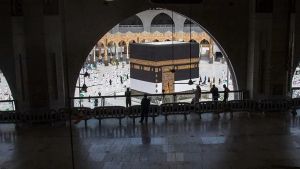JAKARTA - Relations between Iran and the United States (US) are simmering. Especially since President Donald Trump withdrew the Iran nuclear control agreement initiated by Obama in 2018. Not to mention that Trump also imposed tough sanctions on the country.
In the aftermath of the incident, various conflicts regarding the two countries also emerged, for example when Iran attacked oil tankers in the region, then the shooting down of a US drone because Iran thought the plane entered their territory, and the bombing incident of a major Saudi oil facility. which concerns US interests there.
And most recently, the US exacerbated the escalation of its conflict by assassinating General Qasem Soleimani in an air strike approved by President Donald Trump on Friday, December 3 yesterday. The issue of World War III suddenly appeared and immediately heated up on the social media scene.
The question is, if these two countries start a war, who will excel?
According to the Global Fire Power website, the United States is in the top position in terms of ranking of military strength. While Iran is far below the US, it is approximately 14th out of 137 countries in the world.
In detail, the number and manpower of the US military power is far superior to that of Iran which only has 1,281,900 military personnel. Not to mention that in terms of the defense equipment budget, the US has a fantastic figure, namely US $ 716 billion or around Rp. 9 trillion.

The budget was used by America to upgrade their main weapon system (alutsista). Uncle Sam's country is suspected to have long-range missiles that are more advanced than Iran, such as the Trdent D-5 missile and intercontinental ballistic missiles (ICBM).
Then the most deadly, the US has a number of nuclear warhead weapons that are almost the same as Russia which when added up more than 90 percent of nuclear weapons are owned by the two countries.
The projection of US power is also supported by personnel from the military dimension other than the army, sea and air. They have battle tanks, rocket projectors, automatic artillery, armored vehicles and artillery cranes which number up to 48,422. Meanwhile, their combat equipment in the air has so far recorded 10,170 assets and 415 war equipment assets in the navy.
.... targeted 52 Iranian sites (representing the 52 American hostages taken by Iran many years ago), some at a very high level & important to Iran & the Iranian culture, and those targets, and Iran itself, WILL BE HIT VERY FAST AND VERY HARD. The USA wants no more threats!
- Donald J. Trump (@realDonaldTrump) January 4, 2020
Measuring Iran's Military Strength
Meanwhile, Iran has an estimated 523,000 active troops including the IRGC Iranian revolutionary guard. However, with a population of 83,000,000 Iran is estimated to still be able to increase its troops by 47,324,105.
Meanwhile, for the defense budget, Iran is clearly defeated by the US, which is only 6.4 billion dollars, which is less than 1 percent of the US defense budget.
Its ground war equipment strength is recorded at 8,577 consisting of battle tanks, rocket projectors, automatic artillery, armored fighting vehicles and crane artillery. Meanwhile, Iran's air power including all aircraft and helicopters has a total of 512 assets, and has 398 marine warfare equipment including ships, submarines and war mines.
For long-range attack control, Iran has 12 operational missiles, most of which are short and medium range. Meanwhile, long-range defense equipment such as intercontinental missiles are still under development.
Iran also has nuclear weapons. Even so, the international atomic energy agency (IAEA) had inspected Iran's nuclear program in 2015, which stated that the country did not have nuclear weapons. But it does not rule out if Iran uses its nuclear energy reactor to produce the deadliest weapon, as summarized by Express.uk.
However, this military strength cannot be used as a single variable. The reason is, even though Iran's military strength is not as strong as the US, the country has strong networks in its regional proxies and has an unmistakably weak alliance that could threaten the US at any time.
Metro.uk proclaimed, Iran has a strong relationship with Iraq, for example. Where, the Iranian-backed Shiite militia groups there have tens of thousands of members. The group existed after the US-led invasion in 2003.

The strongest and most well-trained Iran-supported groups include Asaib Ahl al-Haq, Kataib Hezbollah, Harakat Hezbollah al-Nujuba and the Badr Organization. Several of these Iranian groups have fought in Syria in support of President Bashar al-Assad.
Meanwhile in Yemen, the Iran-backed Houthi movement has been battling a Saudi-led military alliance in Yemen for nearly five years. Iran has championed the Houthis as part of its axis of regional resistance.
Saudi Arabia and its allies accuse Iran of arming and training the Houthis. But Tehran does not admit that it supports arms for the Houthis.
One of the "acts" of the Houthis that once threatened the US was when they claimed responsibility for the attack on Saudi oil production sites in September 2019. The attack resulted in temporarily cutting more than half of the oil production of Saudi Arabia, which is a US friend.
This also makes the US say that Iran also played a role behind the attack. As is known, the Houthis have about 180,000-200,000 militias under their control according to a Chatham House report as quoted by the tempo.
Then the last "secret weapon" of Iran is the Palestinian Islamic Group Hamas which rules Gaza. Hamas is predicted to be a strong armed militia because it is supported by Iranian funds and military. Analysts estimate the group has about 30,000 militias and thousands of rockets.
So, there are many variables that need to be taken into account in order to predict more accurately who will excel if the two countries go to war.
The English, Chinese, Japanese, Arabic, and French versions are automatically generated by the AI. So there may still be inaccuracies in translating, please always see Indonesian as our main language. (system supported by DigitalSiber.id)













